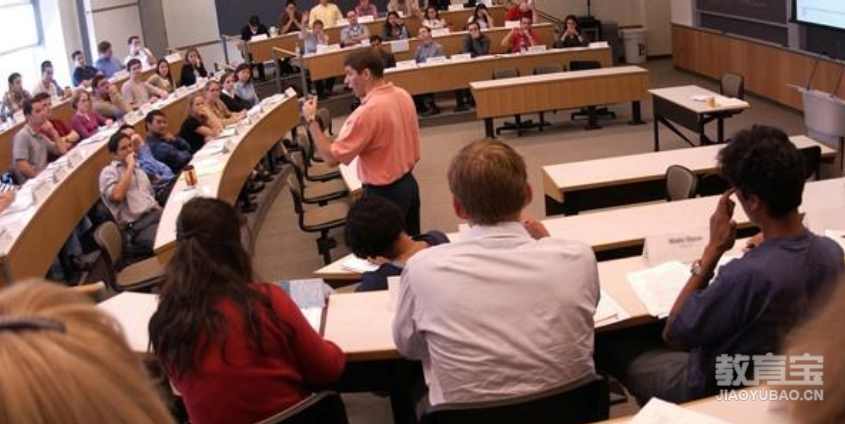 返回
教育头条
返回
教育头条

GMAT备考逻辑题的众多变化
今天小编为大家带来GMAT备考逻辑题的众多变化,希望对大家GMAT备考有所帮助,祝各位同学取得令人满意的成绩。和小编一起来看看吧!
GMAT逻辑题,题目内容虽然千变万化,但其核心思想,解题技巧却从未发生改变。做题时若沉溺于其光怪陆离的外表,而不思索逻辑题中的核心本质,那便很难获得一个好成绩,往往劳神烦心而无所得。那么GMAT逻辑题真正能帮你取得高分的本质思想是什么呢,如何能如郭靖般以简单的十八招就打遍天下呢?在天道GMAT冲分班中我们所要深入探讨的,正是GMAT逻辑中那些一成不变,但却从不过时的核心思想。
仅以我们其中一节课所要讲的内容思维定式为例,如近的考试中的一道真题:
一座城市分为东西两部分,西边交税多,东边交税少,但是却把大部分钱都投到了东边,这样做是不公平的。如果说得到的福利和缴的税成正比,才是公平的。问这种说法是基于那个假设。
选项:1.在决定钱给东边还是给西边时,主要考虑的是公平;
2.投的钱和该区域人民得到的福利成正比;
这道GMAT考试真题的出题点很明显,在题目中所提供信息的不对等,挑战的是我们的思维定式。投的钱多就代表当地人民所得到的福利多吗?万一的钱都投在大楼建设上呢?我们不知道,而这样的信息,不属于常识,属于我们所想当然的东西,但光靠我们相信他存在是不行的,需要明确地表达出来,因此这题的答案应该是第二个答案。这样依据信息不对等原则挑战我们思维定式的题目还有很多,比如上过我们天道GMAT强化班的同学可能记得,我们的逻辑分册第52题是这么说的:
A recent report determined that although only 3 percent of drivers on Maryland highways equipped their vehicles with radar detectors,33 percent of all vehicles ticketed for exceeding the speed limit were equipped with them. Clearly, drivers who equip their vehicles with radar detectors are more likely to exceed the speed limit regularly than are drivers who do not. The conclusion drawn above depends on which of the following assumptions?
A.Drivers who equip their vehicles with radar detectors are less likely to be ticketed for exceeding the speed limit than are drivers who do not.
B.Drivers who are ticketed for exceeding the speed limit are more likely to exceed the speed limit regularly than are drivers who are not ticketed.
C.The number of vehicles that were ticketed for exceeding the speed limit was greater than the number of vehicles that were equipped with radar detectors.
D.Many of the vehicles that were ticketed for exceeding the speed limit were ticketed more than once in the time period covered by the report.
E.Drivers on Maryland highways exceeded the speed limit more often than did drivers on other state highways not covered in the report.
虽然内容和刚才的真题差距不小,一个说福利,一个说超速,但是两道GMAT逻辑题所考察的点是一模一样的,你的思维定式告诉你那些经常因超速被罚款的司机就是那些经常超速的司机,可这是真的么?比如某些轻车熟路的司机,他们一天时间里可能有超过一半的时间在超速,但因为他们熟知北京各个点摄像头和的分布,于是从未被罚款。而我们诚实善良的老师,可能一天里就超了一次速,却就被摄像头拍到了,被罚了款,那到底谁更容易被罚款呢?于是这并不一定对等的信息,需要我们在选项中补上。

这两道题相对来说要简单一些,不对等的信息说得比较直白,但有些时候这样的隐含会非常的含蓄,这时候也就要求同学需要有更为敏锐的思维。比如有这一道题,也是一道非常经典的难题,同学的正确率非常的低:
Often patients with ankle fractures that are stable, and thus do not require surgery, are given follow-up x-rays because their orthopedists are concerned about possibly having misjudged the stability of the fracture. When a number of follow-up x-rays were reviewed, however, all the fractures that had initially been judged stable were found to have healed correctly. Therefore, it is a waste of money to order follow-up x-rays of ankle fracture initially judged stable. Which of the following, if true, most strengthens the argument?
A.Doctors who are general practitioners rather than orthopedists are less likely than orthopedists to judge the stability of an ankle fracture correctly.
B.Many ankle injuries for which an initial x-ray is ordered are revealed by the x-ray not to involve any fracture of the ankle.
C.X-rays of patients of many different orthopedists working in several hospitals were reviewed.
D.The healing of ankle fractures that have been surgically repaired is always checked by means of a follow-up x-ray.
E . Orthopedists routinely order follow-up x-rays for fractures of bone other than ankle bones.
这题乍一看很多学生会一头雾水,五个答案都不像正确答案。可如果你熟知我们上面所提到的知识的话,你就会意识到这其实还是你的思维定式在作祟。文章的结论是后续的X光检查是浪费钱,而原因是a number of follow-up x-rays were reviewed, however, all the fractures that had initially been judged stable were found to have healed correctly,问题也就出在这个原因上,谁告诉你a number of follow-up x-rays 的检验结果就是可信的,亦或是有代表性的?如果这些follow-up x-rays 全部出自于同一个医生之手,或者同一家医院,那是不是还有可能是这位医生或者这家医院的仪器有问题呢?所以我们应该选择C选项,把数量和有代表性这两个信息间的空缺补上。
当然,GMAT逻辑题还有其他的核心思想,这些题所包含的逻辑思维核心往往也不止这一个,因此我们在课上还将共同攻克隐含知识、差异比较、数学思维等多道难关,让你终真正达到化繁入简,以不变应万变,轻轻松松拿下GMAT逻辑题。
GMAT逻辑题,题目内容虽然千变万化,但其核心思想,解题技巧却从未发生改变。做题时若沉溺于其光怪陆离的外表,而不思索逻辑题中的核心本质,那便很难获得一个好成绩,往往劳神烦心而无所得。那么GMAT逻辑题真正能帮你取得高分的本质思想是什么呢,如何能如郭靖般以简单的十八招就打遍天下呢?在天道GMAT冲分班中我们所要深入探讨的,正是GMAT逻辑中那些一成不变,但却从不过时的核心思想。
仅以我们其中一节课所要讲的内容思维定式为例,如近的考试中的一道真题:
一座城市分为东西两部分,西边交税多,东边交税少,但是却把大部分钱都投到了东边,这样做是不公平的。如果说得到的福利和缴的税成正比,才是公平的。问这种说法是基于那个假设。
选项:1.在决定钱给东边还是给西边时,主要考虑的是公平;
2.投的钱和该区域人民得到的福利成正比;
这道GMAT考试真题的出题点很明显,在题目中所提供信息的不对等,挑战的是我们的思维定式。投的钱多就代表当地人民所得到的福利多吗?万一的钱都投在大楼建设上呢?我们不知道,而这样的信息,不属于常识,属于我们所想当然的东西,但光靠我们相信他存在是不行的,需要明确地表达出来,因此这题的答案应该是第二个答案。这样依据信息不对等原则挑战我们思维定式的题目还有很多,比如上过我们天道GMAT强化班的同学可能记得,我们的逻辑分册第52题是这么说的:
A recent report determined that although only 3 percent of drivers on Maryland highways equipped their vehicles with radar detectors,33 percent of all vehicles ticketed for exceeding the speed limit were equipped with them. Clearly, drivers who equip their vehicles with radar detectors are more likely to exceed the speed limit regularly than are drivers who do not. The conclusion drawn above depends on which of the following assumptions?
A.Drivers who equip their vehicles with radar detectors are less likely to be ticketed for exceeding the speed limit than are drivers who do not.
B.Drivers who are ticketed for exceeding the speed limit are more likely to exceed the speed limit regularly than are drivers who are not ticketed.
C.The number of vehicles that were ticketed for exceeding the speed limit was greater than the number of vehicles that were equipped with radar detectors.
D.Many of the vehicles that were ticketed for exceeding the speed limit were ticketed more than once in the time period covered by the report.
E.Drivers on Maryland highways exceeded the speed limit more often than did drivers on other state highways not covered in the report.
虽然内容和刚才的真题差距不小,一个说福利,一个说超速,但是两道GMAT逻辑题所考察的点是一模一样的,你的思维定式告诉你那些经常因超速被罚款的司机就是那些经常超速的司机,可这是真的么?比如某些轻车熟路的司机,他们一天时间里可能有超过一半的时间在超速,但因为他们熟知北京各个点摄像头和的分布,于是从未被罚款。而我们诚实善良的老师,可能一天里就超了一次速,却就被摄像头拍到了,被罚了款,那到底谁更容易被罚款呢?于是这并不一定对等的信息,需要我们在选项中补上。

这两道题相对来说要简单一些,不对等的信息说得比较直白,但有些时候这样的隐含会非常的含蓄,这时候也就要求同学需要有更为敏锐的思维。比如有这一道题,也是一道非常经典的难题,同学的正确率非常的低:
Often patients with ankle fractures that are stable, and thus do not require surgery, are given follow-up x-rays because their orthopedists are concerned about possibly having misjudged the stability of the fracture. When a number of follow-up x-rays were reviewed, however, all the fractures that had initially been judged stable were found to have healed correctly. Therefore, it is a waste of money to order follow-up x-rays of ankle fracture initially judged stable. Which of the following, if true, most strengthens the argument?
A.Doctors who are general practitioners rather than orthopedists are less likely than orthopedists to judge the stability of an ankle fracture correctly.
B.Many ankle injuries for which an initial x-ray is ordered are revealed by the x-ray not to involve any fracture of the ankle.
C.X-rays of patients of many different orthopedists working in several hospitals were reviewed.
D.The healing of ankle fractures that have been surgically repaired is always checked by means of a follow-up x-ray.
E . Orthopedists routinely order follow-up x-rays for fractures of bone other than ankle bones.
这题乍一看很多学生会一头雾水,五个答案都不像正确答案。可如果你熟知我们上面所提到的知识的话,你就会意识到这其实还是你的思维定式在作祟。文章的结论是后续的X光检查是浪费钱,而原因是a number of follow-up x-rays were reviewed, however, all the fractures that had initially been judged stable were found to have healed correctly,问题也就出在这个原因上,谁告诉你a number of follow-up x-rays 的检验结果就是可信的,亦或是有代表性的?如果这些follow-up x-rays 全部出自于同一个医生之手,或者同一家医院,那是不是还有可能是这位医生或者这家医院的仪器有问题呢?所以我们应该选择C选项,把数量和有代表性这两个信息间的空缺补上。
当然,GMAT逻辑题还有其他的核心思想,这些题所包含的逻辑思维核心往往也不止这一个,因此我们在课上还将共同攻克隐含知识、差异比较、数学思维等多道难关,让你终真正达到化繁入简,以不变应万变,轻轻松松拿下GMAT逻辑题。
以上就是教育宝头条为大家带来的GMAT备考逻辑题的众多变化,感谢您的观看GMAT相关资讯。本站提供GMAT培训、资讯、资料,详细联系我微信:18560125702喜欢记得点赞哦,教育宝头条,每天都为你带来新鲜的学习资讯,别忘了关注哦。返回教育宝头条
【免责声明】本文仅代表作者本人观点,与教育宝无关。教育宝对文中陈述、观点判断保持中立,不对所包含内容的准确性、可靠性或完整性提供任何保证。请读者仅作参考,特此声明!




